Have you ever pondered the real cost of road accidents, especially when it comes to leg injuries? Unveil the truths with our latest article, ‘How Much Does Road Accident Fund Pay for Leg Injury?’. Dive into an unexplored world of claims, compensation, and life-changing insights. Get ready to be enlightened!
Introduction
Welcome to an insightful exploration of the Road Accident Fund (RAF) in South Africa and its crucial role in supporting victims of road accidents.
Navigating the aftermath of a motor vehicle accident can be daunting, especially when it involves injuries.
But fear not, this article aims to enlighten you on the essential aspects of the RAF, guiding you through the complexities with ease and clarity.

Understanding the Road Accident Fund
The RAF is a pivotal entity in South Africa, established with the noble aim of providing appropriate cover to all road users within the country.
Have you ever wondered what happens if you, or someone you know, unfortunately, becomes a victim of a road accident?
The RAF steps in as a beacon of hope, offering financial compensation for injuries or death caused by vehicular accidents. This support is not just limited to drivers but extends to passengers, pedestrians, and even cyclists – essentially anyone affected by a road mishap.
At its core, the RAF is about more than just financial aid; it’s a lifeline for those thrown into turmoil by unforeseen road tragedies.
The Fund aids in covering medical expenses, loss of income, or support in the case of disability or death. It’s a safety net ensuring that the impacts of road accidents do not completely derail lives.
In the following sections, we’ll dive deeper, unraveling the intricacies of claiming from the RAF, especially in cases involving leg injuries – a common and often debilitating outcome of road accidents.
From understanding the common types of leg injuries to navigating the legal and medical pathways for claiming compensation, this article promises to be your comprehensive guide.
Weather it’s broken bones in your pelvis, hips or legs, sprained ankles, a dislocated kneecap or an amputation of the lower limb – we’ve got you covered.
Stay tuned as we embark on this journey of understanding, support, and recovery. Whether you are a victim, a family member, or just a curious reader, this article aims to equip you with valuable knowledge and a better understanding of the Road Accident Fund’s role in South Africa’s road safety landscape.

Common Leg Injuries in Motor Vehicle Accidents
Motor vehicle accidents, an all-too-common occurrence on our roads, can result in a myriad of injuries, particularly to the legs. Let’s delve into the types of leg injuries frequently seen in crash victims and provide a statistical overview to understand the magnitude of these injuries.
Types of Leg Injuries in Crash Victims
Leg injuries in motor vehicle accidents range from mild to severe, impacting the victims’ lives in various ways. These injuries include:
- Soft Tissue Injuries: These involve damage to tendons, muscles, and ligaments. Such injuries can lead to impaired function and sometimes long-term deformity.
- Bone Fractures: The leg, with its complex structure of bones, is prone to fractures in different areas, notably the femur, tibia, and fibula.
- Leg and Foot Injuries: Drivers, in particular, often sustain leg and foot injuries due to their positioning during a crash. These injuries can range from simple bruises to complex fractures involving the small bones in the foot.
- Amputations: In severe cases, the force of a crash can lead to amputation of a limb or necessitate surgical amputation due to extensive damage.

Statistical Overview
Globally, road traffic injuries are a significant concern, with millions suffering non-fatal injuries annually, many of which involve leg injuries. Specifically, the World Health Organization highlights the immense impact of road traffic crashes, not only in terms of mortality but also in the considerable economic losses due to treatment costs and lost productivity.
South Africa is no exception. According to the Road Traffic Management Corporation (RTMC), over 12,000 people die on South African roads each year.
In the context of motor vehicle accidents, speed is a critical factor. An increase in speed not only elevates the likelihood of a crash but also the severity of the consequences, including the gravity of leg injuries. Furthermore, the use of safety devices like seat belts and helmets plays a crucial role in mitigating these injuries.
Understanding these common leg injuries and their statistical prevalence underscores the importance of road safety measures and the need for effective post-crash care. Whether it’s through public awareness, improved vehicle safety standards, or better road designs, addressing these issues is vital for reducing the frequency and severity of such injuries.

Anatomy of the Leg as it Pertains to Motor Vehicle Injuries
When it comes to motor vehicle accidents, the anatomy of the leg plays a significant role in both the type and severity of injuries sustained. Understanding the complex structure of the leg can help us comprehend why certain injuries are more prevalent and severe in car crashes.
Overview of Leg Anatomy
The leg comprises several critical components, each vulnerable to different types of injuries:
- Bones: The major bones in the leg are the femur (thighbone), tibia (shinbone), and fibula. The femur is the strongest bone in the body and requires a significant force to break, often seen in high-impact collisions. The tibia and fibula, being more exposed, are susceptible to fractures even in less severe accidents.
- Knee Joint: As the largest joint in the body, the knee is made up of bones, cartilage, ligaments, and tendons. It is prone to a variety of injuries, including sprains, ligament tears, fractures, and dislocations. Knee injuries often result from the knee impacting the dashboard or from unnatural twisting during an accident.
- Cartilage and Meniscus: These structures act as shock absorbers between the femur and tibia. Injuries here can occur from twisting or compressive forces during crashes.
- Ligaments and Tendons: Ligaments connect bones to other bones and tendons connect muscles to bones. Injuries to these structures can result from abrupt stops, direct impact, or sudden changes in direction, common in vehicle accidents.

Susceptibility to Injuries
Different parts of the leg are susceptible to various injuries during a motor vehicle accident:
- Fractures: The most common leg injuries in accidents are fractures. The severity can range from simple breaks, which may be treated with casts or splints, to complex fractures requiring surgical intervention with metal pins and plates.
- Knee Injuries: The knee is particularly vulnerable due to its complexity and role in weight-bearing. Common injuries include ACL (Anterior Cruciate Ligament) and PCL (Posterior Cruciate Ligament) tears, often caused by rapid changes in motion or direct impacts.
- Soft Tissue Damage: Muscles, tendons, and ligaments can suffer strains, sprains, and tears from the forces exerted in a crash.

Understanding the anatomy of the leg and how it is affected by motor vehicle accidents is crucial for both prevention and treatment.
The severity of leg injuries in crashes can be influenced by several factors, including the nature of the collision, the position of the leg at the time of impact, and the overall health of the individual.
In summary, the leg’s complex structure makes it particularly susceptible to a range of injuries during motor vehicle accidents.
From bone fractures to soft tissue damage, each component of the leg can be impacted, highlighting the importance of safety measures and effective treatment following such incidents.
Factors Influencing the Severity of Leg Injuries from Motor Vehicle Accidents
Understanding the factors that influence the severity of leg injuries in motor vehicle accidents is crucial in both preventing and treating these injuries.
Here’s a breakdown of how different elements can impact injury severity:
- Seat Belts: The importance of seat belts cannot be overstated. Wearing a seat belt significantly reduces the risk of serious injury, as it prevents the body from making a violent impact with other surfaces in the vehicle and keeps the body more stable during a crash.
- Impact Location: The severity of leg injuries can vary depending on where the vehicle is struck. Side, rear, or front impacts each pose different risks and can lead to different types of injuries. Additionally, the seating position of the individual in the vehicle at the time of the crash also plays a role in determining the nature of the injuries.
- Body Position: If the person was facing forward or turned in the seat at the time of impact, this can influence both the type and severity of the injury. Strains resulting from twisting or turning the body can exacerbate certain injuries.
- Collision Speed: High-speed collisions are associated with more severe injuries. However, even low-speed impacts can cause serious and debilitating injuries.
- Airbags: Airbags are crucial in reducing impacts to the head, neck, and chest during a crash. In head-on collisions, airbags combined with seat belts greatly reduce the risk of death.
- Injuries to the Head and Neck: Direct or indirect impacts to the head and skull can lead to severe injuries. Conditions like concussions and other head injuries can have long-term consequences.
- Knee Bursitis and Torn Meniscus: Injuries to the knee, such as bursitis and torn meniscus, can occur due to the knee’s position during a crash. These injuries cause swelling, pain, and problems moving the knee joint.
- ACL Injury and Ligament Injuries: Injuries to ligaments, such as the ACL, are common in car accidents and can cause significant pain, swelling, and instability in the knee joint.
- Lacerations and Amputations: Severe car accidents can lead to cuts and even amputations, which can be life-changing and require immediate medical attention.
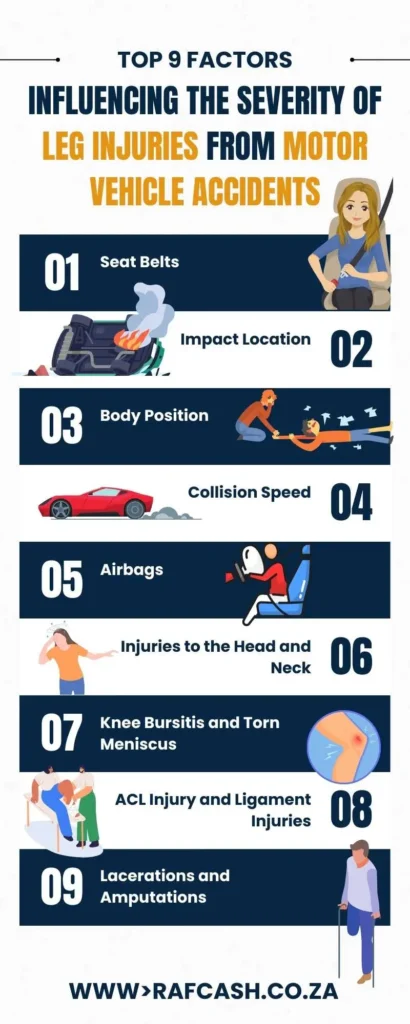
The severity of leg injuries from motor vehicle accidents is influenced by a combination of factors related to the crash’s dynamics and the individual’s physical position during the impact.
Proper safety measures, like wearing seat belts and having airbags, can play a critical role in reducing the severity of these injuries.
Leg Amputations Following a Car Crash
Leg amputations following a car crash represent some of the most severe and life-altering consequences that victims can endure.
These injuries often result from the most catastrophic of accidents, where the impact and resulting trauma are so severe that limbs are irreparably damaged.
Causes Leading to Amputations
In the chaotic aftermath of a car crash, several factors can lead to an amputation. High-speed impacts can cause direct trauma, crushing limbs beyond repair. In some cases, prolonged extrication times can lead to compromised blood flow, resulting in tissue death and necessitating amputation.
Additionally, secondary complications like infections or blood clots in severely injured limbs can leave doctors with no other option but to amputate to save the victim’s life.
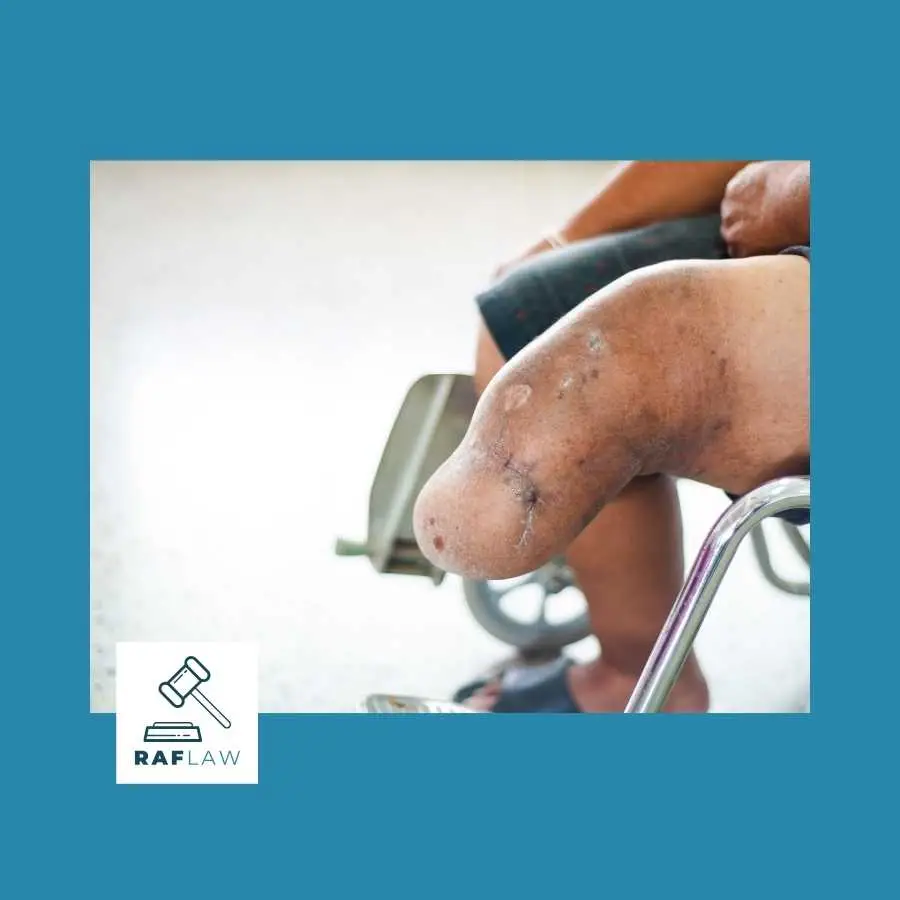
Psychological and Physical Impact on Victims
The journey following an amputation is fraught with challenges.
Physically, victims have to adapt to the loss of a limb, which can mean relearning basic movements, adjusting to prosthetics, and enduring ongoing physical therapy. The psychological impact is just as significant.
Victims often experience grief, similar to losing a loved one, as they mourn the loss of a part of their body.
Depression, anxiety, and post-traumatic stress disorder (PTSD) are common, compounded by the drastic change in body image and the arduous journey of rehabilitation.

Case Examples and Their Outcomes
In one notable case, a young professional suffered a leg amputation following a high-speed collision.
The victim underwent several surgeries and extensive rehabilitation.
The legal claim against the Road Accident Fund focused not only on the immediate medical costs but also on the future costs of prosthetics, which need replacing periodically, and ongoing therapy. The court awarded a substantial sum, recognizing the long-term physical and psychological effects of such a traumatic injury.
In another case, a victim’s lower leg was amputated after being trapped in a vehicle for an extended period following a crash. This case highlighted the secondary complications that can necessitate amputation.
The compensation included funds for state-of-the-art prosthetics, home modifications, and psychological counseling, acknowledging the holistic impact of the injury.
These cases underscore the profound effects of leg amputations following car crashes. They highlight not only the immediate physical challenges but also the long-term psychological and lifestyle changes that victims must navigate.
The outcomes of these cases set precedents for the comprehensive nature of compensation, addressing the multifaceted needs of amputation victims.
Determination of Compensation for Leg Injuries in Court
When it comes to determining compensation for leg injuries in court, the process is complex and multifaceted, influenced by a range of factors and legal frameworks.
Understanding these elements is crucial for both claimants and legal professionals navigating these claims.
Factors Considered by Courts
- Nature and Severity of the Injury: The courts first assess the injury’s nature – whether it is a fracture, amputation, or nerve damage – and its severity. More severe injuries typically warrant higher compensation due to increased medical needs and greater impact on the victim’s life.
- Medical and Rehabilitation Costs: These include expenses already incurred and projected future costs. Courts evaluate detailed medical reports and expert testimonies to gauge these expenses accurately.
- Impact on Employment and Earning Capacity: Compensation often reflects the injury’s impact on the victim’s ability to work and earn. This includes current loss of income and potential future earnings, especially if the injury leads to long-term or permanent disability.
- Pain and Suffering: Courts also award damages for physical pain and emotional trauma. This is subjective and varies significantly from case to case.
- Quality of Life Changes: The injury’s impact on the victim’s lifestyle, including their ability to engage in recreational activities or perform daily tasks, is also a crucial factor.
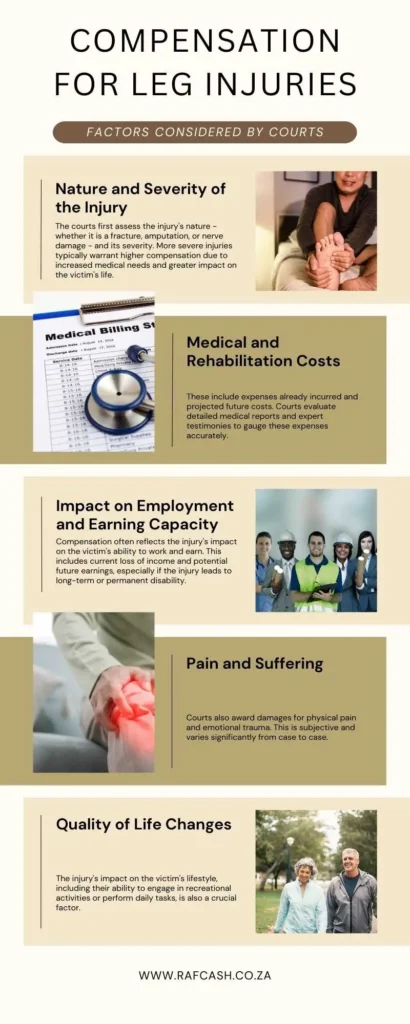
Legal Frameworks and Guidelines
- Road Accident Fund Legislation: In South Africa, the RAF provides a legal framework for compensation. Its guidelines and limitations influence how compensation is calculated and awarded.
- Case Law and Precedents: Courts often refer to previous similar cases to ensure consistency in awards. These precedents play a significant role in guiding current and future compensations.
- Actuarial Calculations: For determining future losses, particularly in income and medical care, courts may rely on actuarial reports. These provide a detailed and scientific estimation of future financial impacts.
- Expert Testimonies: The court heavily relies on testimonies from medical experts, occupational therapists, and psychologists. These experts provide insights into the long-term implications of the injuries, which are critical in determining fair compensation.
In summary, the determination of compensation for leg injuries in court is a thorough process that balances multiple factors to ensure fair and adequate compensation.
This process is guided by a combination of medical evidence, legal frameworks, and judicial discretion, aiming to address both the immediate and long-term impacts of the injury on the victim’s life.

Case Studies: Lives Impacted by Motor Vehicle Accidents in South Africa
Case Study 1: Severe Compound Fracture
Name: Abel Marakalala
Age: 28
Occupation: Software Developer
Accident Details
Abel was involved in a head-on collision while commuting to work. The impact resulted in a severe compound fracture in his left leg.
Medical Treatment
He underwent multiple surgeries and required extensive physiotherapy. His recovery period was estimated at 12 months.
Claim Process
Abel filed a claim with the Road Accident Fund for medical expenses, loss of earnings, and compensation for pain and suffering. He provided medical reports, proof of income, and a detailed account of the accident.
Outcome
The claim was processed over six months. Abel received compensation for medical expenses, a portion of his lost income, and a settlement for pain and suffering.
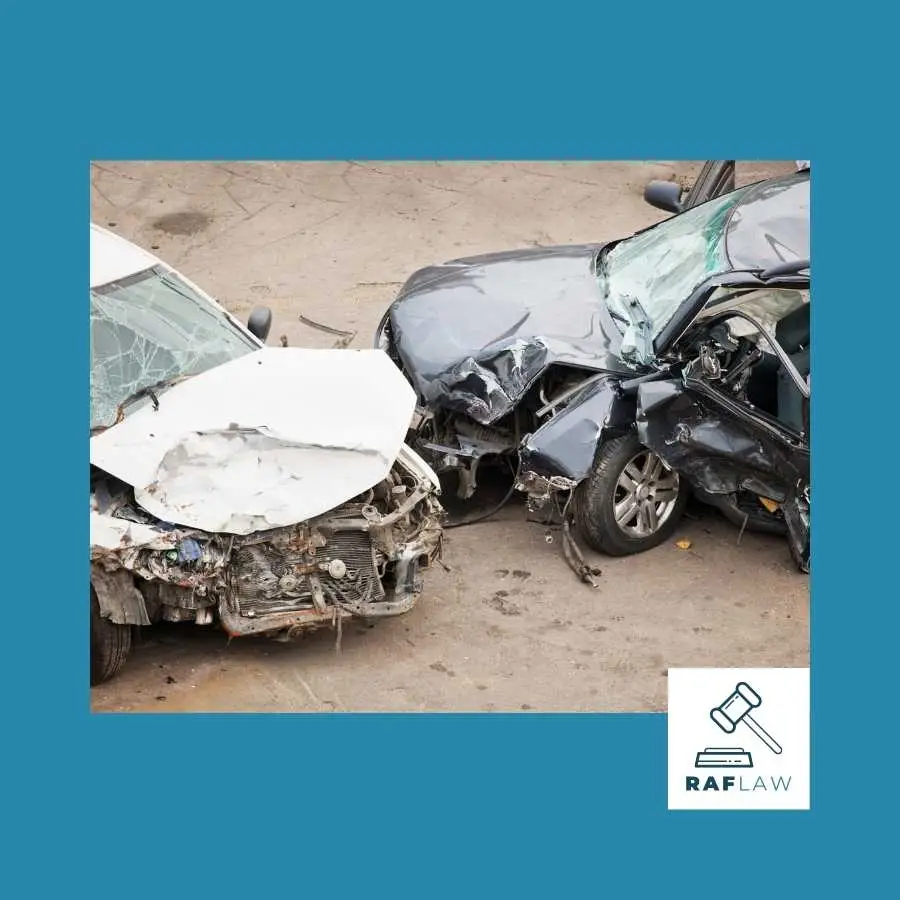
Case Study 2: Multiple Leg Injuries with Long-term Implications
Name: Christina Makgoba
Age: 35
Occupation: School Teacher
Accident Details
Christina was a passenger in a vehicle that was sideswiped by a truck, causing multiple injuries including a broken femur and a shattered knee in her right leg.
Medical Treatment
She underwent surgery and faced a long, complex rehabilitation process. The injuries led to a permanent limp and reduced mobility.
Claim Process
Christina’s claim included medical expenses, future medical care costs, loss of earnings, and compensation for permanent disability and emotional distress. Her legal representative helped compile a comprehensive claim.
Outcome
After a year, the Road Accident Fund awarded her a significant settlement. This covered her medical expenses, ongoing treatment costs, and compensation for her permanent disability and emotional trauma.

Case Study 3: Traumatic Amputation and Psychological Impact
Name: Letho Dedmann
Age: 42
Occupation: Construction Worker
Accident Details
Letho was involved in a multi-car pile-up, resulting in the traumatic amputation of his right leg below the knee.
Medical Treatment
He received immediate medical attention, followed by the fitting of a prosthetic leg and rehabilitation.
Claim Process
Letho’s claim included medical and rehabilitation expenses, loss of income (including future income loss due to his inability to return to his previous job), and compensation for physical and psychological trauma.
Outcome
The claim took approximately 36 months to settle. The Road Accident Fund provided compensation for his medical expenses, a portion of his lost income, and a substantial amount for his physical and psychological suffering.

Role of Expert Reports in Court
In the realm of Road Accident Fund (RAF) claims, expert reports play a pivotal role in the courtroom, often tipping the scales in favor of the claimants. These reports, crafted by medical professionals and other specialists, offer the court a detailed and scientific perspective on the claimant’s injuries, their future implications, and the necessary compensation.

Which Medical Experts for Leg Injuries
To support a damages claim against the Road Accident Fund for a severe leg injury, including related injuries, attorneys typically require several medical-legal expert reports.
These reports help in substantiating the claim and providing detailed insights into the nature of the injuries, their impact, and the required compensation.
The commonly required reports include:
- Orthopedic Surgeon Report: This report details the specific nature of the leg injury, surgical interventions if any, and the prognosis for recovery.
- Neurologist Report: If there is any nerve damage or neurological impact as a result of the injury, a neurologist’s report is crucial.
- Physiatrist or Rehabilitation Specialist Report: This report focuses on the rehabilitation needs and the long-term care plan for recovery.
- Psychologist or Psychiatrist Report: In cases where the injury has led to psychological impacts such as PTSD, anxiety, or depression, a report from a mental health professional is essential.
- Vocational Expert Report: This report assesses the impact of the injury on the claimant’s ability to work and potential future earnings.
- Actuary Report: To calculate the financial impact, especially in terms of loss of income and future medical expenses, an actuary’s report is often required.
- Plastic Surgeon Report: If there are disfiguring scars or the need for reconstructive surgery, a report from a plastic surgeon may be necessary.
- General Practitioner Report: A comprehensive overview from the claimant’s regular doctor can provide a holistic view of the injury and its impacts.

Each of these reports plays a crucial role in building a comprehensive and substantiated claim, helping to ensure that all aspects of the injury and its repercussions are thoroughly evaluated and compensated.
Let Injury Expert Reports: Medico Legal Case Studies
Let’s explore some detailed case studies to understand the influence of these reports on court decisions.
A Case of Complex Leg Injuries
In one particular case, a claimant suffered multiple fractures in a severe car accident. The orthopedic surgeon’s report provided a comprehensive account of the injuries, detailing the need for multiple surgeries and the likelihood of long-term complications.
The court also considered a report from a physiotherapist outlining the extensive rehabilitation required and its impact on the claimant’s daily life.
These reports were instrumental in the court’s decision, leading to a significant compensation award, covering not just the medical expenses but also acknowledging the pain, suffering, and life-altering impact of the injuries.
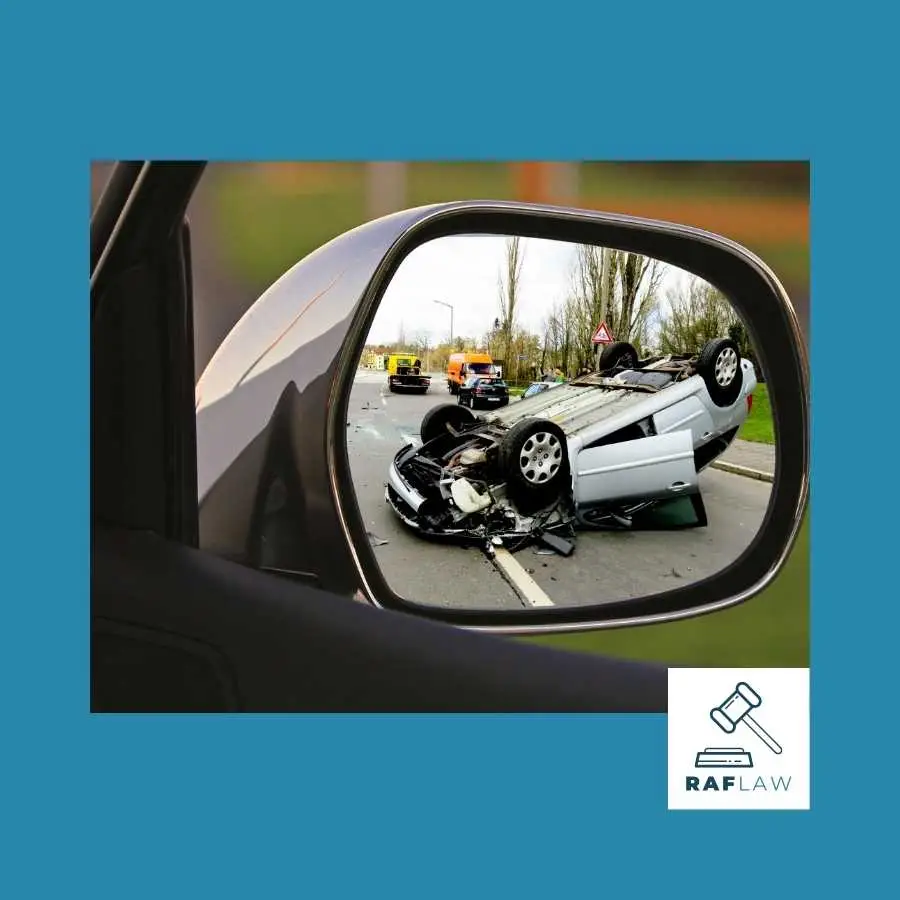
Amputation and Its Aftermath
Another poignant case involved a victim who underwent leg amputation following a car crash.
The claimant’s psychological trauma was thoroughly documented in a psychologist’s report, which spoke of the profound emotional impact and the long road to mental recovery.
A prosthetics expert also provided insight into the cost and future needs for prosthetic limbs.
These expert reports painted a vivid picture of the claimant’s ordeal, swaying the court to award a compensation that was reflective not just of the physical loss, but also the emotional and psychological toll.
These case studies underscore the weight expert reports carry in court. They not only validate the claimant’s injuries and suffering but also provide the court with the necessary details to make informed decisions about compensation.
In essence, these reports serve as a bridge between the claimant’s experience and the legal recognition of their pain and losses, ensuring a fair and just outcome in the complex process of RAF claims.

Historical RAF Awards for Different Types of Leg Injuries
When examining the historical awards given by the Road Accident Fund (RAF) in South Africa for various leg injuries, it is evident that the compensation amounts vary significantly based on the nature and severity of the injury.
Compilation of RAF Awards
Below are examples detailing different types of leg injuries and the corresponding RAF awards. This table would provide a clear and organized view of the historical data.
Please note that each case is different, and that there are many factors which a judge will consider before quantifying damages for a leg injury claim.
INJURY | GENERAL DAMAGES | LOSS OF INCOME |
R 850 000.00 | R2 599 735.00 | |
R240 000 | R- | |
R350 000 | R870,005 | |
R 640 000 | R 7 167 150.40 | |
R515 305. 25 | R515 305. 25 | |
R385 000.00 | R730 994.00 | |
R 400 000.00 | R 2 650 329. 50 | |
R850 000.00 | ||
Severe Strain or Tear of the Hamstrings | ||
Severe Strain or Tear of the Quadriceps | ||
R750 000.00 | R731 787.00 | |
R150 000 | R1 884 370 | |
R900 000.00 | R- | |
R250 000.00 | R- | |
R450 000.00 | R2 573 692 | |
R700 000 | R- | |
R950 000.00 | R3,481 621.00 | |
R 800 000.00 | R 7 666 125 | |
R- | R4,778,850.00 | |
R- | R4 298 300 | |
R 640 000 | R 7 167 150.40 | |
Avulsion Fracture (where a tendon or ligament pulls off a piece of bone) | R950 000.00 | R1 392 080.00 |
R358 145.82 | R1.6 million (interim payment) | |
R550 000.00 | R 5 411 949.00 |
Analysis of Court Orders for Leg Injury Damages Claims Against RAF
JESSICA LOUISE WOOLLEY VS ROAD ACCIDENT FUND
The court order pertains to a case involving Jessica Louise Woolley and the Road Accident Fund.
Woolley, who was 17 at the time of the accident, sustained severe injuries, including a bilateral open tibia and fibula fracture on the right leg, a compound fracture of the left tibia, knee injuries, and other associated traumas.
The judgment awarded her compensation for general damages and loss of earnings, acknowledging the significant impact of her injuries on her mobility, ability to work, and overall quality of life.
The court considered various factors, including the nature of her injuries, her young age at the time of the accident, and the long-term implications of her leg injuries. The judgment detailed the specifics of the leg injuries and their consequent treatment, emphasizing the ongoing pain and limitations Woolley faced.
It is ordered that:-
- The Defendant is directed to pay Plaintiff in the sum of R 850 000.00(eight hundred and fifty thousand) for general damages.
- The defendant is directed to pay the Plaintiff the sum of R2 173 571.00 (two million one hundred and seventy thousand five hundred and seventy one) for loss of earnings.
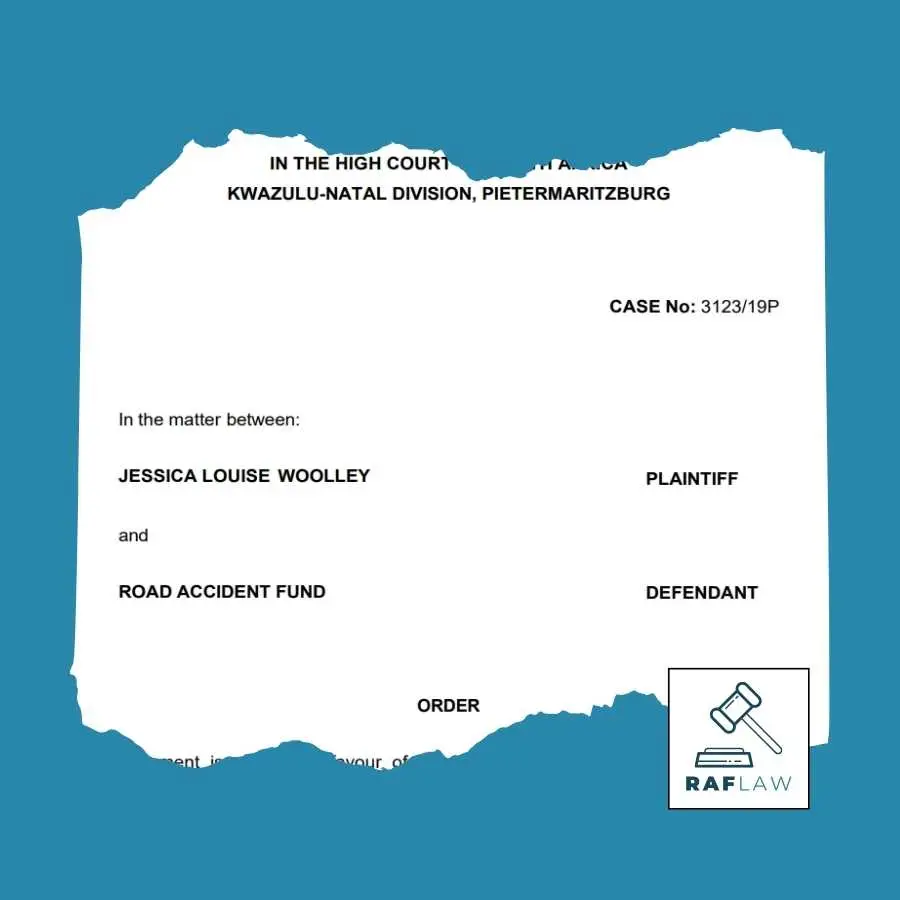
MASEMOLA LESHIDI ELSIE VS ROAD ACCIDENT FUND
The court order involves Leshidi Elsie Masemola’s case against the Road Accident Fund.
Masemola sustained injuries, including a fracture of her left leg and lacerations on her forehead, in a vehicle collision. The document details the medical treatment, including the surgical intervention for the left tibial plateau fracture.
Expert witnesses provided assessments of her injuries, their impact on her life and work capabilities, and future medical needs. The judgment focuses on determining the quantum for loss of earnings and general damages, considering the evidence and expert opinions presented.
The plaintiff has suffered loss of earning capacity as she will no longer be accommodated in the work that she use to do.
The amount that is fair and reasonable for future loss of earnings is R 6 906 773.00 as per the calculations submitted by the actuary. I am inclined to agree with counsel for the plaintiff that she must be compensated in the sum of R 1.2 million for general damages.

Support Services and Rehabilitation
In South Africa, claimants of leg injuries can access a range of support services, including legal aid and rehabilitation services.
Legal Aid South Africa offers professional legal advice and representation to those who cannot afford it.
This service is particularly important for individuals with limited financial resources, as it ensures access to legal support for compensation claims related to road accidents. Legal Aid South Africa implements a ‘means test’ to determine eligibility, focusing on helping individuals like the poor, women, children, and the rural poor.
Additionally, pro bono legal services are available through various organizations, including the Legal Practice Council, which provides free legal assistance subject to a means test and case merit evaluation.
For cases involving civil litigation, such as personal injury and motor vehicle accident claims, many attorneys work on a contingency fee basis, offering services without upfront payment, charging only if the case is won.
Regarding rehabilitation services, there are significant challenges in South Africa, partly due to the focus of the healthcare system on communicable diseases like HIV/AIDS and TB.
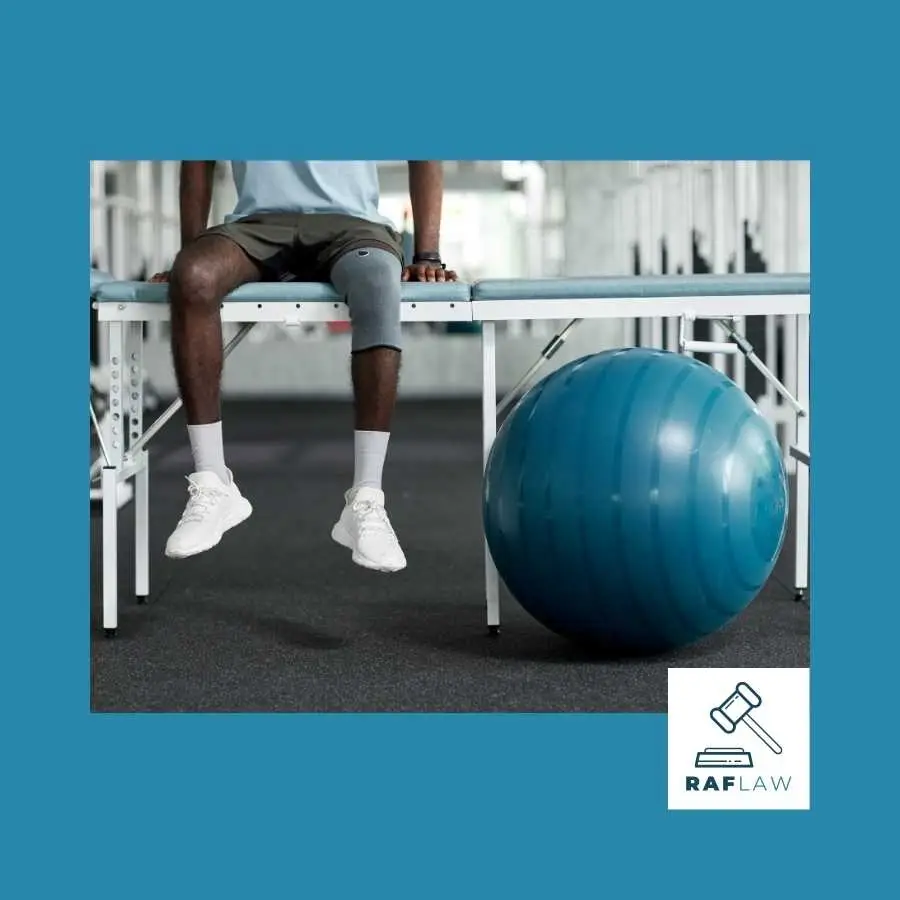
The country has not prioritized rehabilitation historically, which impacts the availability and quality of services for those with chronic health challenges, including those arising from road accidents.
Despite these challenges, there are efforts to improve rehabilitation services, with a need for strategic, evidence-informed decisions to ensure equitable, accessible, and affordable rehabilitation care.
For comprehensive legal assistance, claimants can contact Legal Aid South Africa or the Legal Practice Council.
For rehabilitation services, claimants may need to navigate through various healthcare providers, possibly including private services, depending on the specific needs and resources available.
- Legal Aid South Africa: Legal Aid SA
- Legal Practice Council: Legal Practice Council
- ProBono.org for free legal services: ProBono.org
- South African Society for Labour Law for labor law matters: SASLAW
Conclusion
As we conclude our exploration of the Road Accident Fund’s (RAF) role in supporting victims of motor vehicle accidents with leg injuries, several key findings emerge:
- Diverse Nature of Leg Injuries: The range of leg injuries from motor vehicle accidents is extensive, from soft tissue damage to severe cases like amputations. Each injury carries its unique challenges and implications for the victim.
- Critical Role of Expert Reports: Expert medical reports are instrumental in RAF claims. They provide a comprehensive view of the injury’s impact, aiding in determining the appropriate compensation.
- Court’s Approach to Compensation: Courts consider a multitude of factors including the injury’s severity, medical costs, impact on quality of life, and loss of income. The compensation formula, while a starting point, is fine-tuned with these considerations.
- RAF’s Comprehensive Support: The RAF plays a vital role in providing financial support to accident victims. This support is not limited to immediate medical expenses but extends to cover long-term impacts, including loss of income and psychological effects.
- Historical Awards as Precedents: Past RAF awards for leg injuries set important precedents, ensuring consistency and fairness in compensation. They serve as a guide for what victims can expect in terms of support.
Reflecting on the RAF’s role, it becomes clear that its support goes beyond mere financial compensation; it’s about restoring dignity and providing a semblance of normalcy to those whose lives have been altered by road accidents.
The RAF’s efforts are crucial in mitigating the long-term impacts of such injuries on individuals’ and families’ lives.

As we consider these insights, it’s important for potential claimants and their families to understand the RAF’s processes and the importance of seeking appropriate legal and medical advice post-accident.
Awareness of one’s rights and the available support is the first step towards a fair and just recovery process.
To those impacted by such injuries, remember that the journey to recovery, both physical and financial, is not one you have to walk alone.
The RAF, along with legal and medical professionals, are resources at your disposal, ready to support and guide you through this challenging time.
Embark on a journey of discovery and empowerment with the mysteries of the Road Accident Fund finally unraveled. Don’t let road accidents leave you in the dark. Stay informed and educated by subscribing to our newsletter at RAFCash. Your first step towards mastering the RAF ecosystem starts here!
Note: Medical information for this article has been sourced from OrthoInfo – AAOS, Mayo Clinic, Watson Chiropractic, . Nothing in this article should be read as providing medical advice. In the event of a medical emergency or in the event of injury following a motor vehicle accident, a competent medical practitioner should be sought.
Frequently Asked Questions
How Long Does It Take to Receive Compensation from the RAF for a Leg Injury?
The time to receive compensation can vary, typically taking several months to a year, depending on the complexity of the case and the efficiency of legal proceedings.
Can I Claim from the RAF for a Minor Leg Injury?
Yes, you can claim for any leg injury resulting from a road accident, but the compensation amount will be proportionate to the severity of the injury.
What Types of Expenses Does RAF Compensation Cover?
RAF compensation covers medical expenses, loss of income, pain and suffering, and in severe cases, costs for ongoing rehabilitation and lifestyle adjustments.
Do I Need a Lawyer to File a Claim with the RAF?
While not mandatory, it’s highly recommended to have a lawyer to navigate the legal complexities and ensure a fair claim process.
How is Compensation Calculated for a Severe Leg Injury Like Amputation?
Compensation for severe injuries like amputation considers medical costs, future prosthetic needs, rehabilitation, lost income, and the significant impact on life quality.
What if My Leg Injury Worsens After Filing the RAF Claim?
If your injury worsens, you can request a reassessment of your claim, but this must be supported by new medical evidence and expert reports.
Can I Claim for Psychological Trauma After a Leg Injury?
Yes, psychological trauma, such as PTSD or depression resulting from the accident and injury, can be included in the RAF claim.
How Important are Medical Reports in RAF Claims?
Medical reports are crucial as they provide detailed documentation of your injuries, treatment, and prognosis, significantly impacting the claim outcome.
What Happens if I Can't Return to Work Due to My Leg Injury?
If you’re unable to return to work, compensation can include loss of future earnings, based on your career prospects and age at the time of injury.
Can Family Members Claim for Loss of Support in Case of a Fatal Leg Injury?
In cases of fatal injuries, dependents or family members can claim for loss of financial support and funeral expenses from the RAF.
Glossary
- Compensation: Financial payment awarded to a victim for losses or injuries sustained in an accident.
- Claimant: A person who makes a legal claim or demand for compensation.
- Prosthetics: Artificial devices used to replace a missing body part, such as a leg or foot.
- Rehabilitation: The process of helping someone return to a normal life after injury, through therapy and support.
- Actuarial Report: A report prepared by an actuary, using statistics and mathematical calculations to assess future financial losses.
- Psychological Trauma: Emotional and mental injury caused by distressing events, impacting an individual’s well-being.
- Amputation: The surgical removal of a limb or part of a limb.
- Fracture: A break or crack in a bone.
- Ligament: A band of tissue connecting bones or cartilage, providing support to joints.
- Tendon: A flexible but inelastic cord of strong fibrous collagen tissue attaching a muscle to a bone.
- Femur: The thigh bone, which is the longest and strongest bone in the human body.
- Tibia: The shinbone, located in the lower leg between the knee and the ankle.
- Fibula: The calf bone, located in the lower leg alongside the tibia.
- ACL (Anterior Cruciate Ligament): A ligament in the knee that connects the thigh bone to the shinbone, crucial for knee stability.
- Quantum: The amount or extent of compensation in a legal claim, especially in personal injury cases.

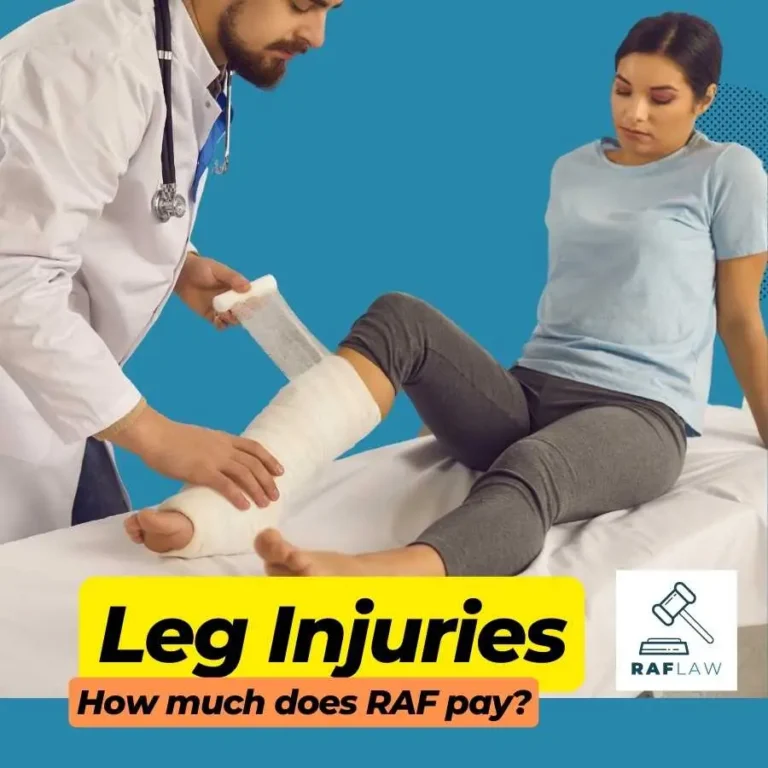

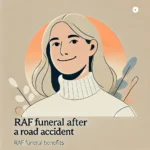
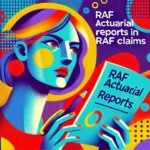

2 Responses
Hi my sister lost her husband in 2016 in an accident truck drove over him up till now she didn’t get paid he also had a 3yrs old child at that tym my sister is in lots of trouble because she can’t afford to look after herself n no place to live
Hi I’m busy with a RAF claim and it is almost done. The offer I got I’m not happy with it is very little I feel I should have been played out more because it is a serious tibia and broken foot injury and it’s permanent plus nerve damage. I hardly saw my lawyer during this claim. I’m still waiting for last payment but not happy at all. Can you look into this matter please because I feel I was done in or refer me to someone.
I’m in pain everyday and is struggling to pass everyday it’s not easy. I thank you for understanding.